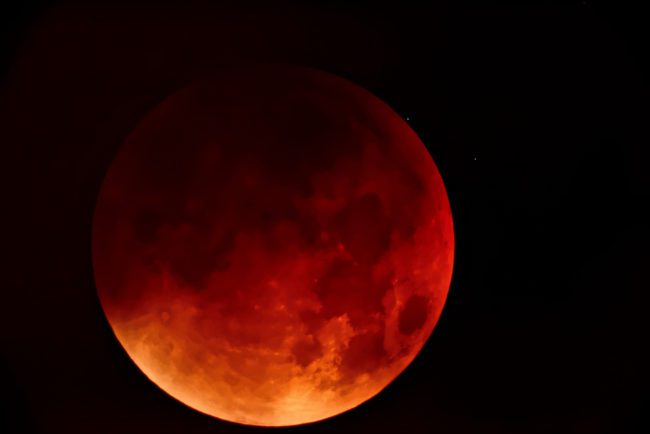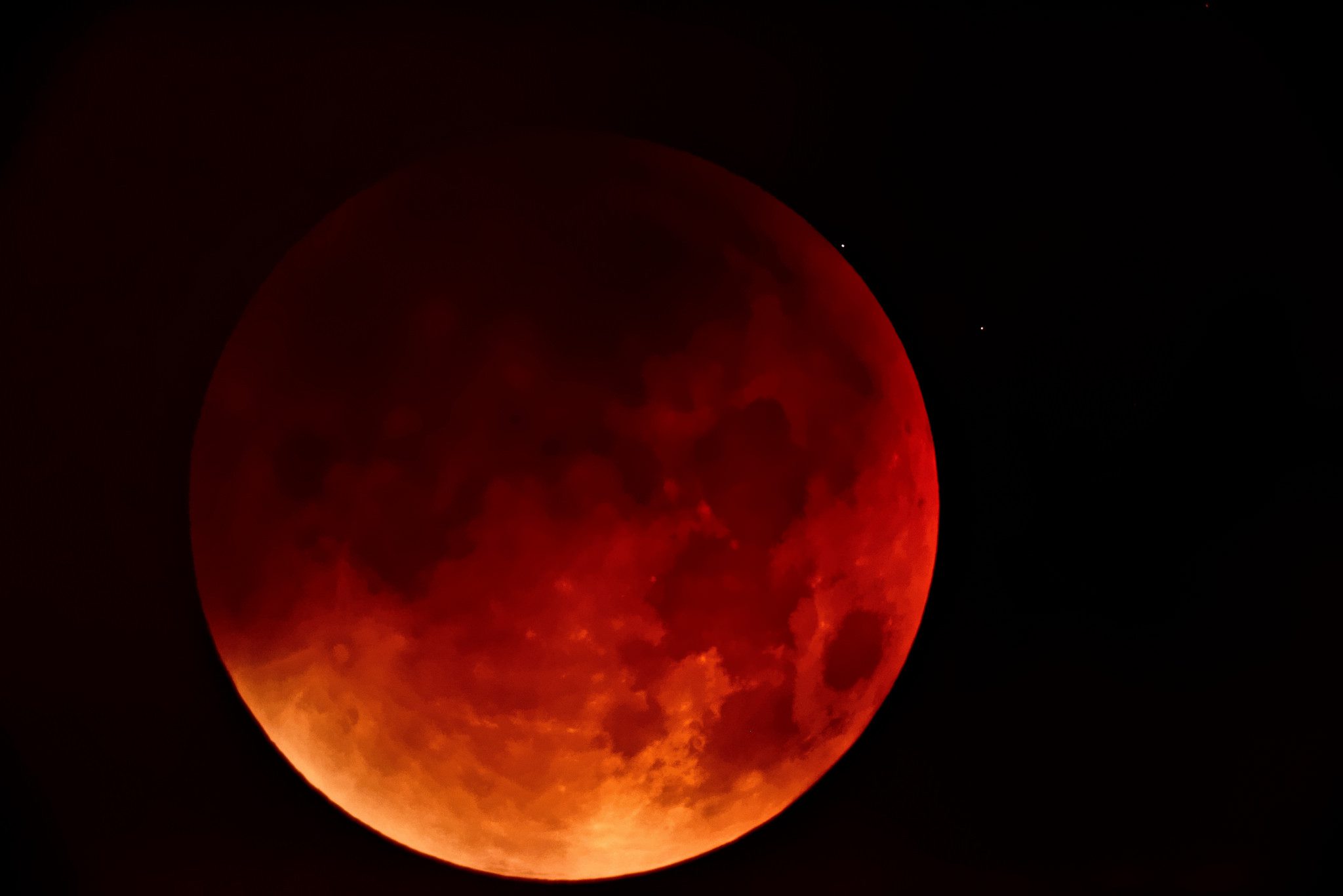
On Wednesday, Jan. 31, 2018, there will be a rare celestial event. The Super Blue Blood Moon will rise for much of the world to see. The last occurrence was in December 1982 and it has not been seen in America for 150 years.
What is a Super Moon? A full moon that is closer to Earth than usual.
What is a Blue Moon? It is not something that can be seen. It is the second occurrence of a full lunar body in the same month.
What is a Blood Moon? During a lunar eclipse, the Earth moves between the sun and the lunar body. The shadow casts a copper color onto the moon for an hour causing it to look like it is bloody.
The sun shines through the Earth’s atmosphere and is refracted toward the red end of the spectrum. This light is cast through the Earth’s shadow onto the surface of the lunar body. This makes the moon appear a reddish-orange during totality. The color varies depending on the amount of dust in the atmosphere of the Earth. If there are active volcanoes throwing a lot of ash into the air, the eclipse will be a deep blood-red.
Although the exact color cannot be predicted, based on the current activity around the globe, the eclipse is anticipated to be a bright orange.
On Tuesday, Jan. 30, the moon will be 223,069 miles from Earth. Thus, the full moon on Jan. 31, will appear 7 percent larger and 14 percent brighter.
People in the northern part of the U.S. west coast, Alaska, Australia, China, and Japan will have the best views of the celestial event. People will be able to see the entire eclipse. Those in the western parts of South America, North America, India and eastern Eurasia will see a partial eclipse. Large parts of South America and Africa will not be able to see the celestial event.
It will begin as the moon enters the darkest part of the Earth’s shadow, which will occur at 6:48 a.m. The darkest part of the Earth’s shadow is called the umbra. Totality will begin at 7:52 a.m. This is why it will be easier to see on the West Coast. Totality will last a maximum of an hour and 12 minutes.
There will be online webcasts of the celestial event for those who will be unable to witness it from their location. Slooh and the Virtual Telescope Project will be webcasting live throughout the event.
The next total lunar eclipse will be July 27. It will be visible from Australia, Asia, Europe, Africa, and South America. It will not, however, be a Super Blue Blood Moon. NASA does not know when this trifecta of events will occur again. It is possible it may not be in this lifetime.
By Jeanette Smith
Sources:
National Geographic: Rare ‘Super Blue Blood Moon’ Coming—First in 35 Years
The New York Times: The Super Blue Blood Moon Is Wednesday. Watch It Before You Go to Work.
Image Courtesy of Robert Grosschopff’s Flickr Page – Creative Commons License



